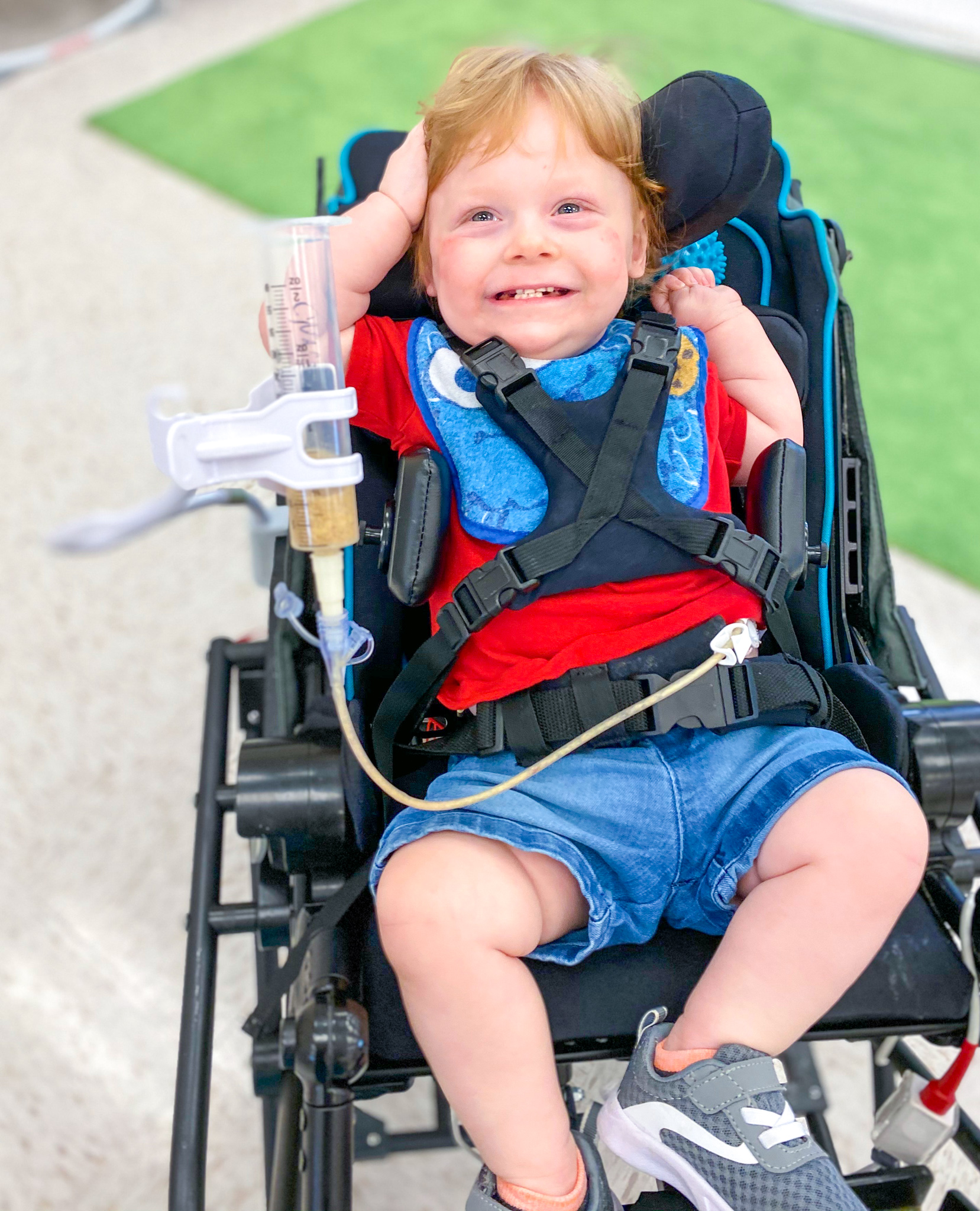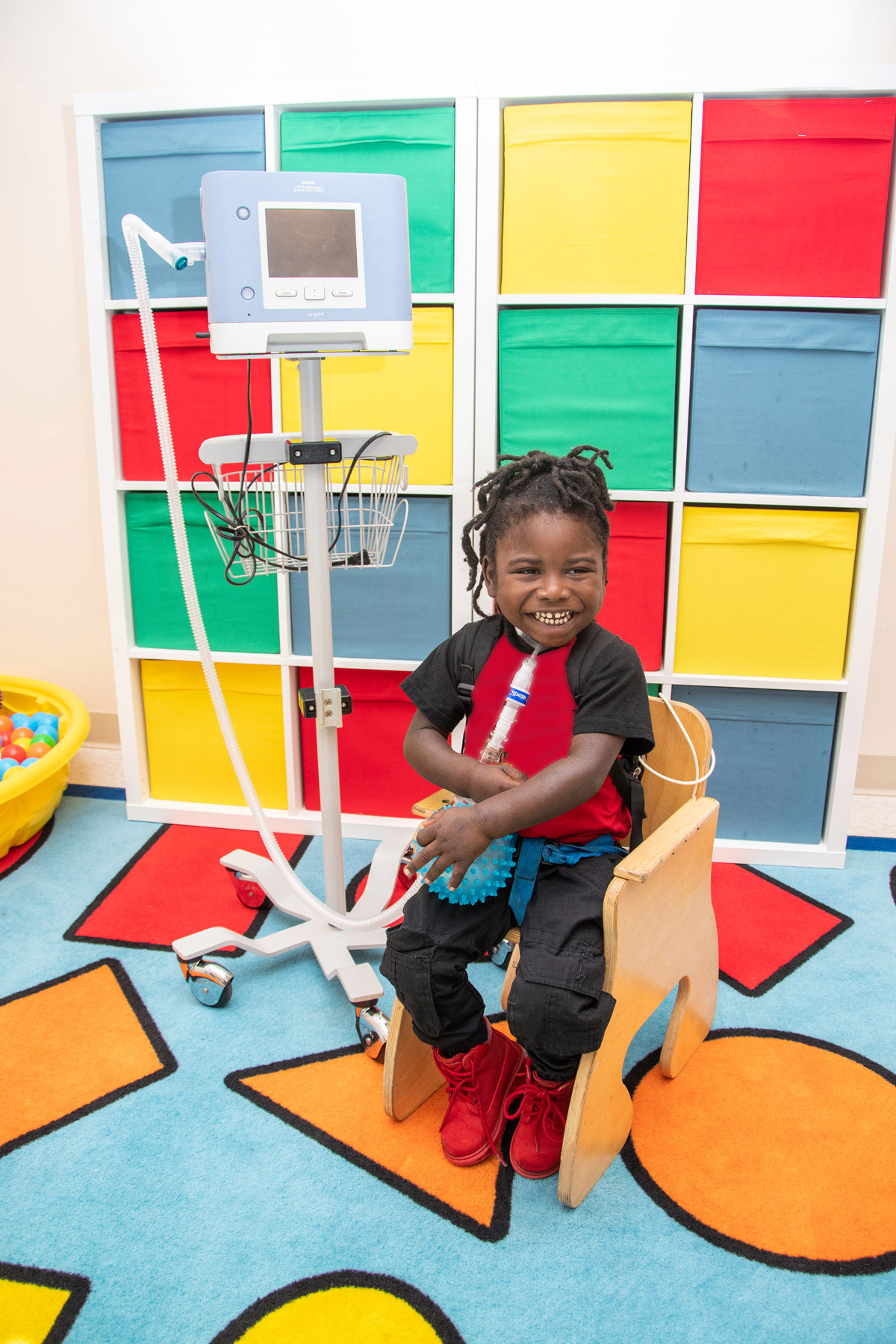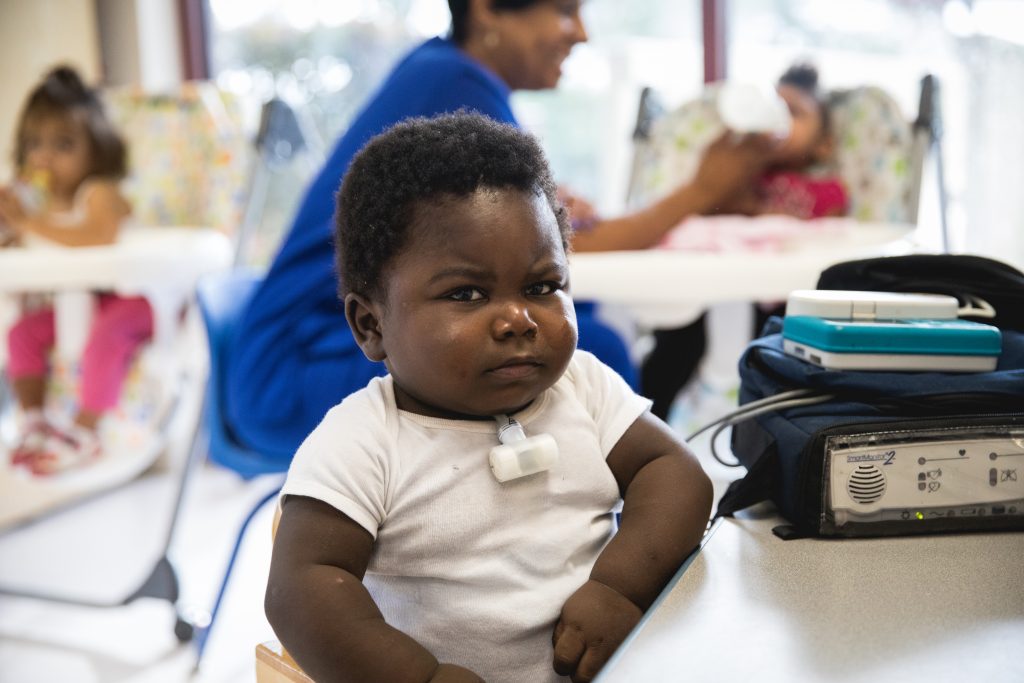
9 Reasons Feeding Tubes are Awesome
October 7, 2022
7 Tips to Make Being a Tubie Parent Easier
November 11, 20226 Trach Tips for Parents
Are you a parent or caregiver of a child with a trach? We know how important it is to have a resource for making trach life a little easier. In this article, we are giving you all our best tips to help you tackle the trach. Your child will most likely encounter a challenge or two right after having their trach placed. Just know that it will become a routine. Once you and your little one become familiar with the trach, it eventually becomes a daily part of life. Here are our trach tips for parents.
1. First Thing… Training and Research
Your nursing agency or hospital nurse will do a thorough job of training you about the ins and outs of trachs. However, you can never be too educated and prepared for life with a trach. For training on trach emergencies, have a list of questions for those types of situations. This way you’ll be equipped for handling them without losing any time and how to manage them. You will want to be sure to cover trach outs, respiratory distress, mucus plus, as well as aspiration.
It never hurts to consider using a palliative care program for extra support. Palliative care is used for multiple situations. On of which, it can help to improve a medically fragile child’s life quality. The programs help you avoid hospitalizations and provide services such as blood draws from the comforts of your own home.
Check with your hospital’s library for all things trach-related. Sometimes children’s hospitals will have librarians who will even do some research for you. Don’t be afraid to bring new studies and reports to your doctor. Though they are very informed about many things, they do not know everything and may not know the latest and greatest study.
It is excellent for any parent with a child with medical complications to connect with other parents going through the same things that you are. Chatting with other parents through chat boards or Facebook groups can allow you to take advantage of the knowledge that other parents may have had already gone through your situation.

2. Equipment
Cloth Pads
Try using a cloth pad instead of gauze. Gauze can cause lint, which can get in the stomach, irritating it. You can even make cloth trach pads that wick away moisture and custom fit them to your child’s specific size. Note that these can even be washed and used over and over again and are not difficult to make.
Trach Ties
For trach ties, you can use a variety of options. From ribbons to shoelaces, custom sewed ties or chains can be used for trach ties. This also helps your child to add a little color or pizzazz to it. You can use many things for trach ties! Shoelaces, ribbons, custom sewed ties, and even chains can be made into trach ties. These allow your child to look cute and fashionable all the time. Some parents swear by chain trach ties or ones that are stainless steel. These can easily be cleaned and sterilized and never absorb any moisture. Ties do not have to be changed every day. It can be a challenge, even a dangerous task, if your child does not want to cooperate. As long as it is clean and dry, wait if you can, even up to 7 days.
Sleeved Suction Catheter
A sleeved suction catheter is an excellent alternative to in-line catheters and can be used for children, not on a vent. Plus, you do not have to wear gloves to suction it. Not all medical supply companies have this type, so you may have to request them or find a supplier that carries them. At Children’s Home Medical Equipment, Inc. we strive to have all equipment you may need.
Humidifiers
Humidifiers are great to use and allow you to control the room’s temperature and humidity. If it is too dry or your child has thick secretions, you can slightly turn up the humidity to combat it. You can run one or more room-size humidifiers once the weather gets colder, and doing this will help avoid a mucus plug for your child. Make sure to clean the humidifier daily and to replace the filters as needed.
Cold Saline
Cold saline can sometimes be key. It is good for dripping in the trach if secretions are bloody or can help to thin them out if they are thick.
Extensions
For kids that get sick and need continuous oxygen, you can get a 20-foot cord to extend the HME/02 clip length. If you put an old shirt on the child and use diaper pins to attach the shirt to the cord, this will help to avoid the child pulling on the trach when they move.

3. Changing of the Trach
- It is best to assign several people to do trach changes and stick with those same people. Those that are comfortable doing it and routinely around make it more comfortable for your child and less likely a mistake will happen.
- Go sparing on lube when changing the trach. Saline is enough to wet the trach, as the more lube you use, the more likely there could be an aspiration issue with your child.
- Never use the obturator unless you really need to.
- Make extra trach ties, trach, and water-based lube or saline to have nearby in a ziplock bag should you have an emergency and need one in a pinch. Keep some all over the house and in your bag for when you leave the house as well.
4. Cleaning Track Tips
- Saline bullets are fantastic for making a quick sterile rinse for trach stoma care cleaning.
- Use an inexpensive baby bottle electric sterilizer to sterilize the trach parts if you reuse them.
- Keep your suction canister from smelling by adding a tablespoon of Listerine or other alcohol-based mouthwash to leave in the canister. This is also super helpful for controlling infections.
- To clean suction tubing and other large-volume nebulizer canisters, soak in a vinegar and water solution. You can use that solution for cleaning the inner cannula as well.
- Don’t hesitate to have any visitors in the house wash their hands and remove shoes upon entering as you do not want to bring in any outside germs and ask those that are feeling under the weather to come another day.
5. Prep for Emergencies
- Take photos or have a diagram of assembling your vent, oxygen, humidifier, and any other attachments that come apart. Label everything. Be sure to post this where you will use it most to prevent any mistakes while reassembling. It is also helpful to have a bag that hangs with pockets to keep essential items at the bedside. These would include syringes, saline, lube, trachs, etc.
- Make sure to keep an emergency bag for your child always on the ready, and perhaps even one for yourself. In a true emergency, you will be prepared in an instant. You will want to include clothing, toiletries, cash/change, snacks, reading material, and most importantly, bring one of every item your child will need at the hospital, such as filters, connectors, HMEs, circuits. Though it would seem like a hospital would have those last few items, they do not always have them in stock all the time. You want to make sure you have a backup in an emergency, so no time is wasted.
6. Outings
- Make a checklist, even add photos of every item in your to-go bag, emergency bag, and/or travel bag. You can quickly check off the items before you head out to make sure everything is fully stocked and you do not forget a thing.
- Rather than bringing a nebulizer everywhere with you, see if your child’s doctor will prescribe an inhaler for specific medications, such as albuterol. It is much easier to have one of those in your bag than carrying a whole nebulizer and tubing around.
ChildrenFirst – 6 Trach Tips for Parents
In the world of having a child with a trach, we hope these trach tips help to make your life as a parent or caregiver a little easier. We also hope some of these tips help your child have a little bit smoother of a time when it comes to their daily routines. At ChildrenFirst, we put children first and those with medical complexities we hold near and dear to our hearts. Let us know if there are additional services ChildrenFirst can assist you with, such as in-home care or providing durable medical equipment. We are located in the Central Florida area.





1 Comment
What can I do about my grandson pulling his trach out every 10 minutes or so. He only has a trach because his trechea is too small and if he runs into any issues they won’t be able to trach him. He doesn’t comprehend so we can’t speak to him about it, he’s also blind and has hearing loss. we have tried everything and nothing we helps him keep the trach in.